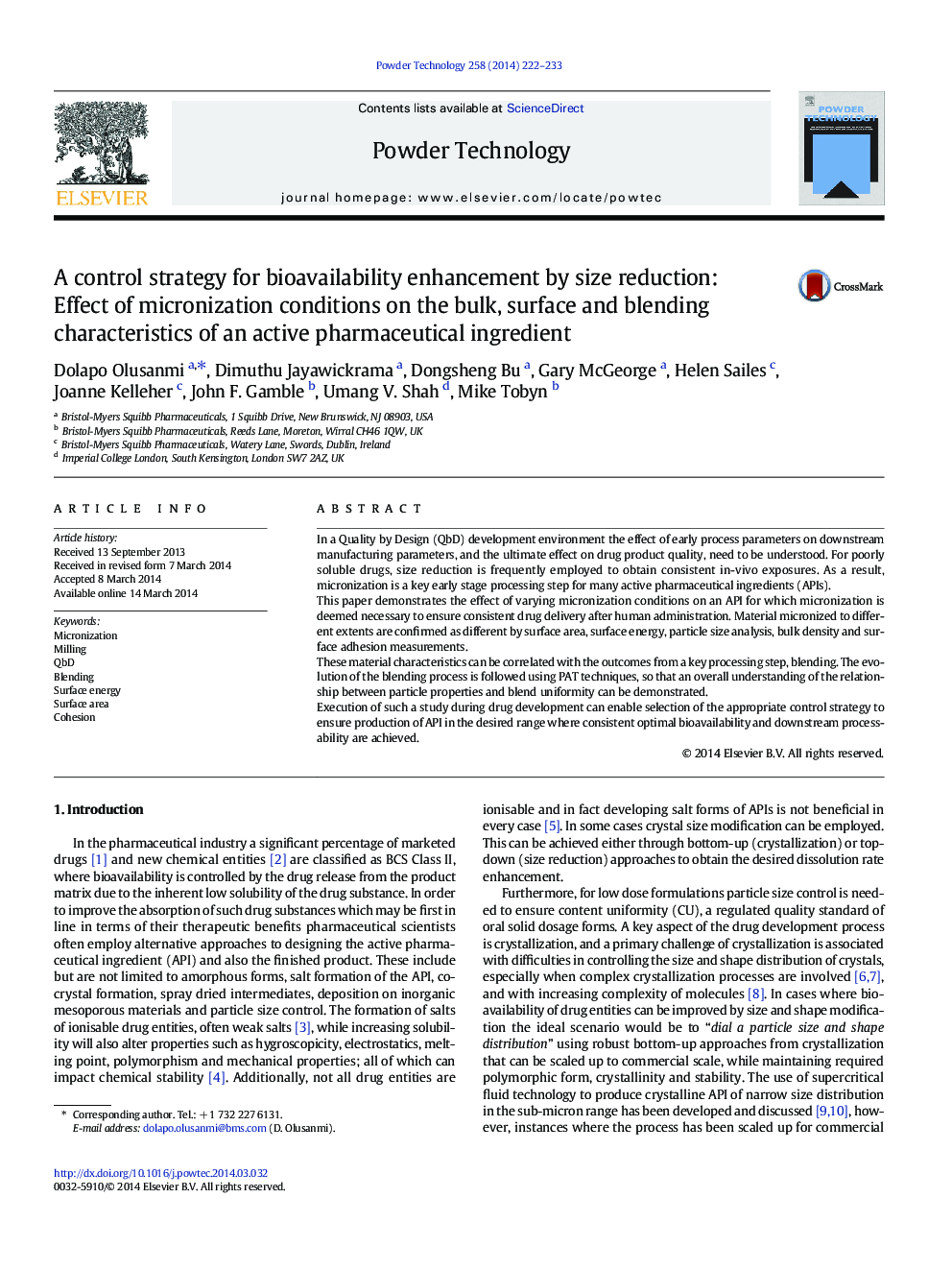| Article ID | Journal | Published Year | Pages | File Type |
|---|---|---|---|---|
| 236086 | Powder Technology | 2014 | 12 Pages |
•The effect of varying micronization conditions on an API is investigated.•Varying micronization extents cause differences in bulk and surface properties.•Blending kinetics, monitored by PAT, is affected by micronization extent.•Excessive micronization can negatively impact bulk handling and processing efficiency.•Study can guide API size selection for optimal processability and bioavailability.
In a Quality by Design (QbD) development environment the effect of early process parameters on downstream manufacturing parameters, and the ultimate effect on drug product quality, need to be understood. For poorly soluble drugs, size reduction is frequently employed to obtain consistent in-vivo exposures. As a result, micronization is a key early stage processing step for many active pharmaceutical ingredients (APIs).This paper demonstrates the effect of varying micronization conditions on an API for which micronization is deemed necessary to ensure consistent drug delivery after human administration. Material micronized to different extents are confirmed as different by surface area, surface energy, particle size analysis, bulk density and surface adhesion measurements.These material characteristics can be correlated with the outcomes from a key processing step, blending. The evolution of the blending process is followed using PAT techniques, so that an overall understanding of the relationship between particle properties and blend uniformity can be demonstrated.Execution of such a study during drug development can enable selection of the appropriate control strategy to ensure production of API in the desired range where consistent optimal bioavailability and downstream processability are achieved.
Graphical abstractFig. 1: Effect of micronization extent on the blending kinetics of API in drug product formulation blend, monitored by Near Infra Red (NIR)Figure optionsDownload full-size imageDownload as PowerPoint slide
